Ang Tsherin Sherpa is a familiar name in Nepal’s art scene, consistently showcasing his artworks both within the country and internationally. Following in his father’s artistic legacy and receiving education at Nepal’s Bhanubhakta School, he carried on the tradition. Despite facing various challenges in life, his proficiency in Thangka art expanded to new heights by the conclusion of his school years. The adage ‘Like father, like son’ resonated in his artwork, echoing his father’s vision of imparting knowledge to artists with limited exposure.
In Ang Tsherin Sherpa’s early works, one can readily identify borrowed elements from Buddhist iconography, including symbols, colors, and gestures. His artworks during this period can be characterized as a dichotomy between the sacred and the secular. Currently, he is showcasing his recent artworks at the Takpa Gallery in Lazimpat, with the exhibition running from December 17th to December 31st, 2023.
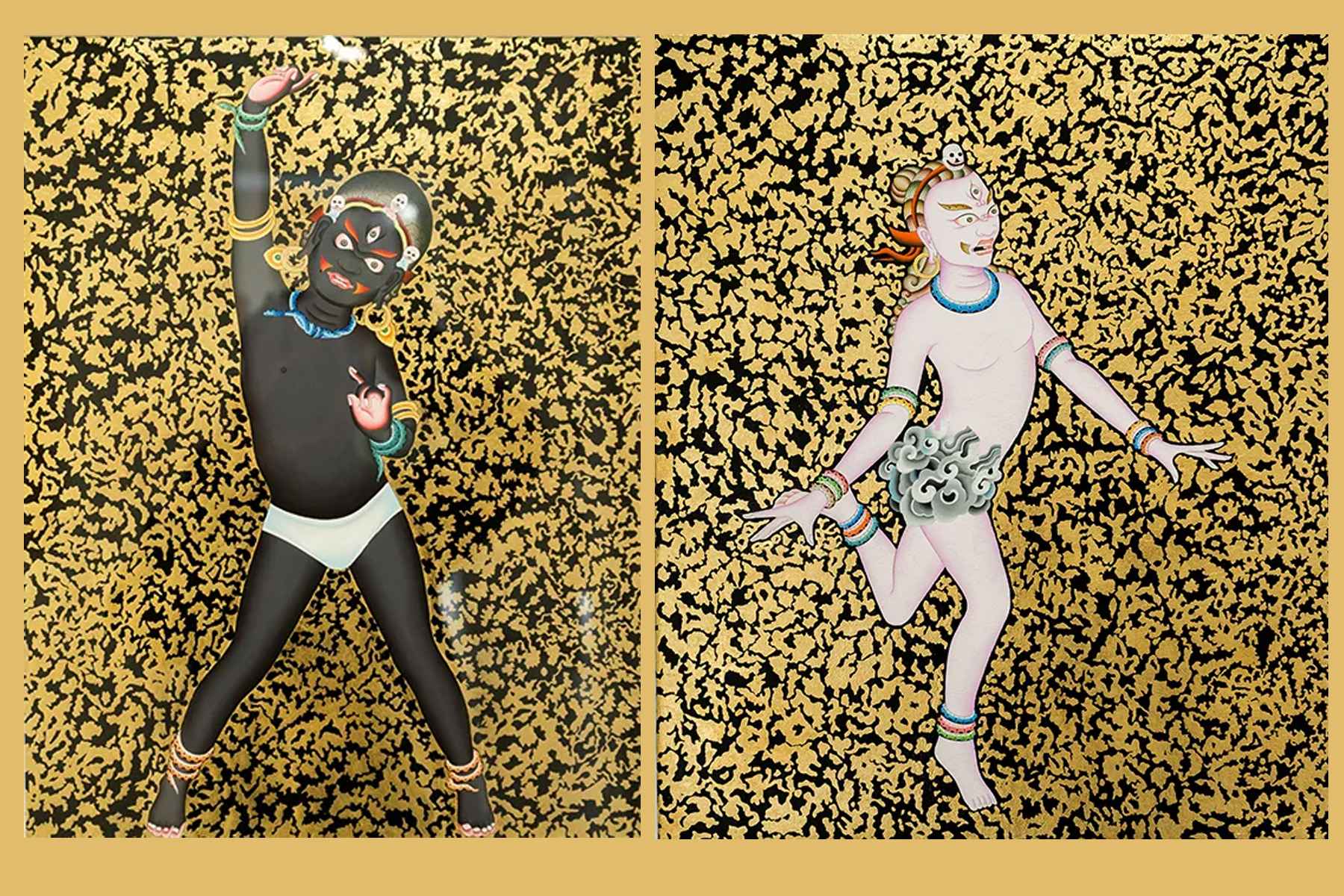
Having traversed extensively throughout his life, artist Ang Tsherin drew inspiration from comic books and movie posters during his childhood. Around 1988, in his late teens, he ventured to Taiwan for his studies. During this period, he had the opportunity to explore museums abroad, where he was deeply inspired by the diverse art collections. Although his stay in Taiwan was brief, lasting around half a decade, he returned to Nepal to assist his father. After this short stint in a foreign land, his enthusiasm for Thangka diminished as he had already been exposed to various forms of art evolving in other parts of the world.
Around 1998, he journeyed to California and began creating art for monasteries and art galleries. During his time there, he observed the emergence of new and distinct forms of art.
He distinctly recalls the day when he had to pay a $10 entrance fee to view a Thangka dating back to the 17th or 18th century. The Thangka was displayed in a unique setting that puzzled him. Despite previously harboring an aversion towards Thangka, this incident prompted him to reconsider and led him to devote even more time to practicing his style of Thangka painting.
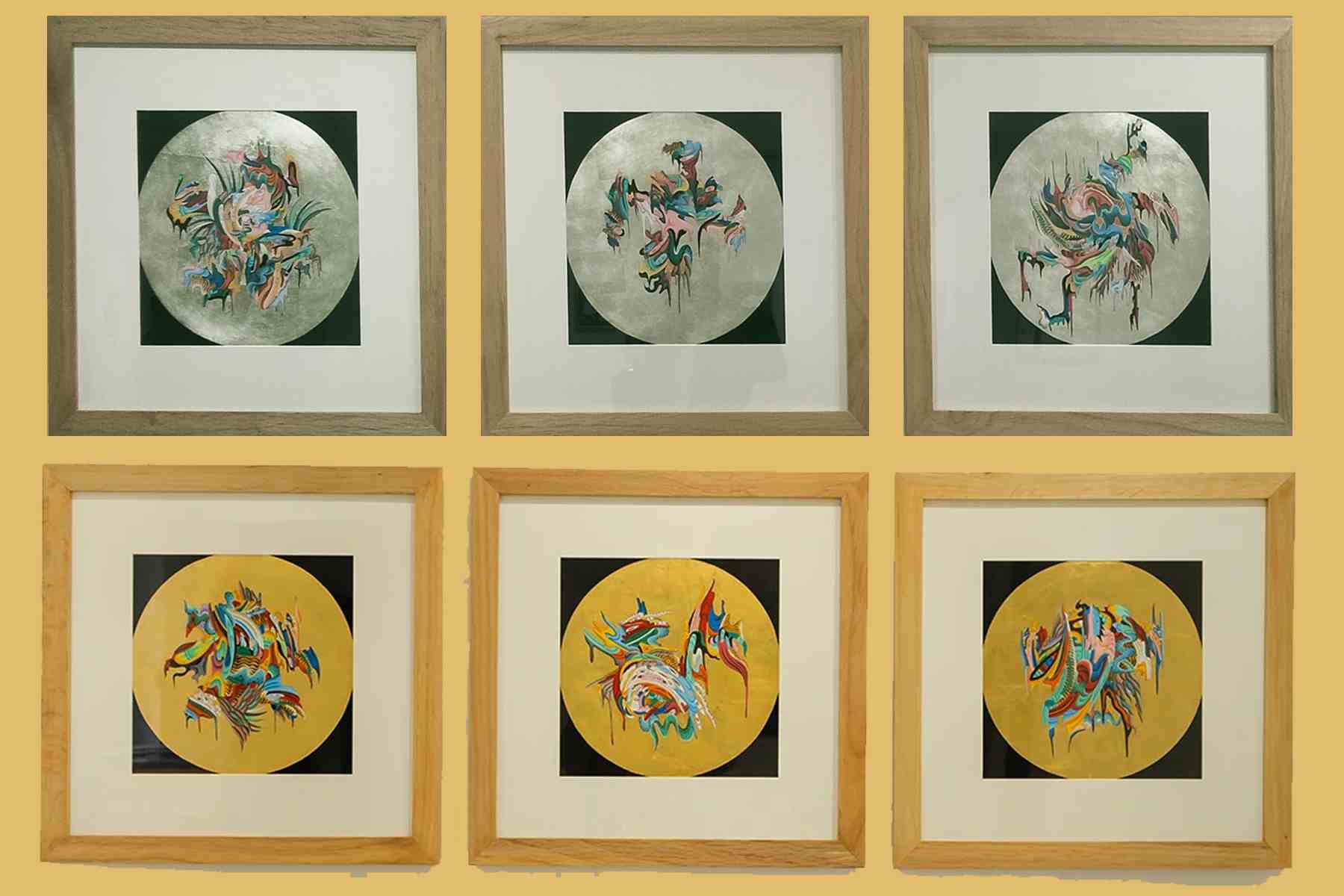
During that period, he had the opportunity to further experiment with his ideas, as new types of businesses were emerging and flourishing in the United States. A prominent juice factory, Jamba Juice, approached Tsherin to experiment with art for their new product launch. He began incorporating a blend of Buddhist texts and English, along with images, creating distinct artworks at that time. Influenced by artists like Jozef Brandt and Frants Lant, he was inspired to explore his themes even more deeply.
Many contemporary artists interpret his artworks as deconstruction, but this modest artist responds with a smile, stating, ‘These are not deconstructions but rather reconstructions.’ He considers himself fortunate for having had the opportunity to study Buddhist philosophy, which became a source of strength in comprehending the underlying principles. When discussing his artistic style, he shares with a smile, ‘In order to break the rules, you must first know the rules properly.’
Even in the present day, within the community practicing Buddhism, religious iconography remains the primary focus. Reflecting on his past artistic endeavors, the artist nostalgically notes, ‘After practicing this form of art for a long time, one tends to lose the thought process of how one feels.’
Reflection on the Creative Process and Inspiration in His Artwork
When discussing his sources of inspiration and his approach to work, he remarks that the art scene hasn’t evolved as it ideally should have. Nevertheless, he maintains the routine of spending at least 3-4 hours in his studio each day. “Even on days when I lack the motivation to work and feel uninspired, I still sit in my studio for contemplation,” the artist shares his perspective.

Being the son of a Master Thangka artist, the Khojpatra team was curious about how his paintings are perceived by his father. In response, he shares, ‘He is pleased with what I’m doing, and even the small pieces of artwork I create also bring him joy.’
His recent works represent a clear departure from his earlier and more traditional artworks. He distinctly recalls that it was in the year 2006 when he last painted a Thangka.
During this period, he embarked on a series of paintings titled “Spirits” and “Protector”. Elaborating on the concept, the artist explains, ‘When people from a specific country begin to travel to different places, they carry their deities and culture with them. These deities don’t reside solely in sacred altars; they accompany individuals even in their everyday thoughts. Hence, the idea of portraying deities in a normal lifestyle came to my mind.’
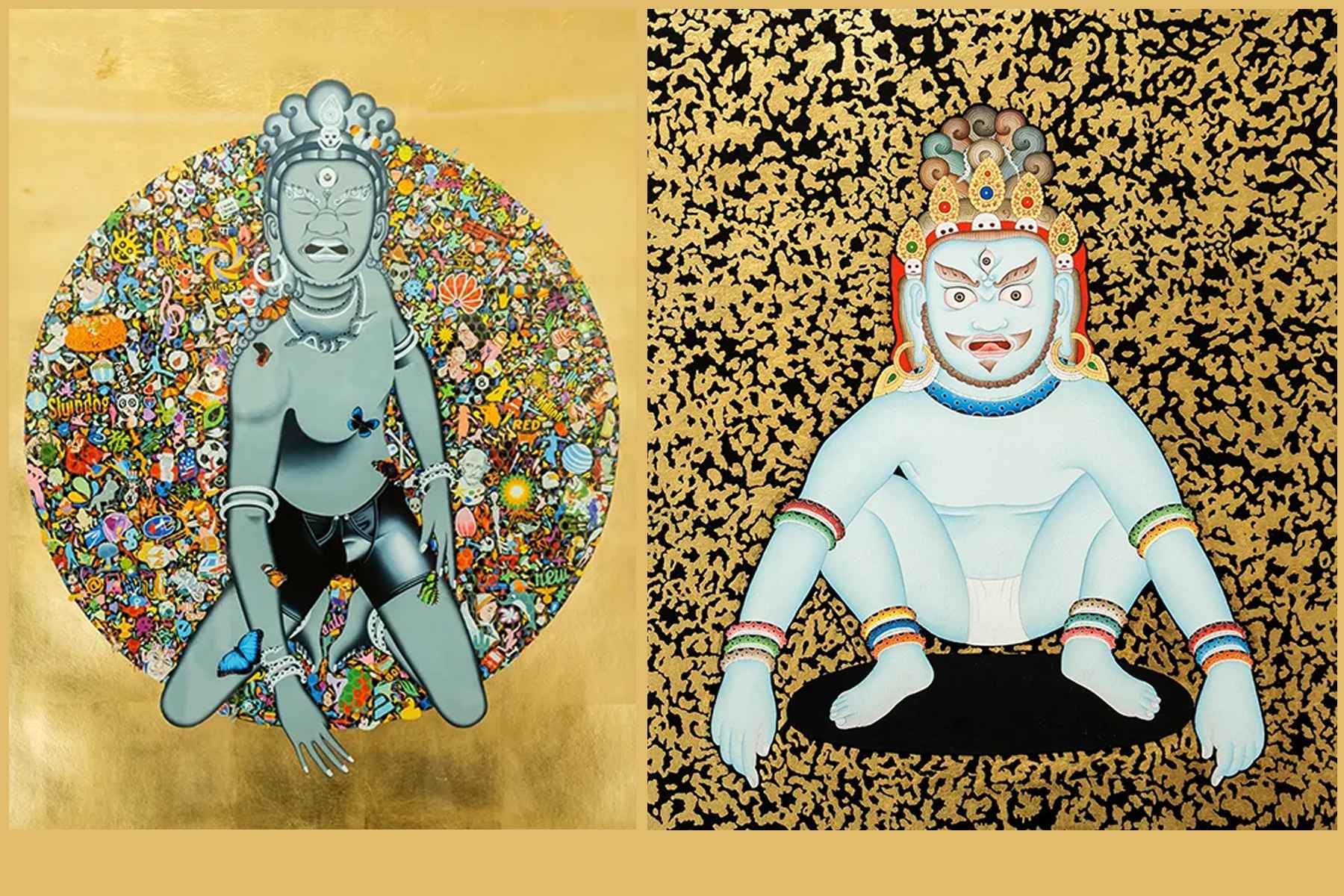
The artist’s creations find homes in numerous international museums across the world. The current exhibition showcases a majority of his recent works, portraying deities engaging in everyday activities within the realm of the mind’s eye. These deities are intentionally presented in casual attire, emphasizing their ability to wear anything comfortable, akin to humans. The exhibition captivates viewers in various ways, drawing a significant number of visitors eager to personally explore the unique artworks displayed in the gallery.



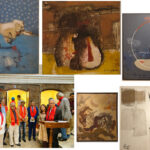
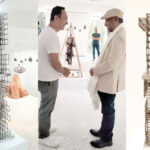


Leave A Comment